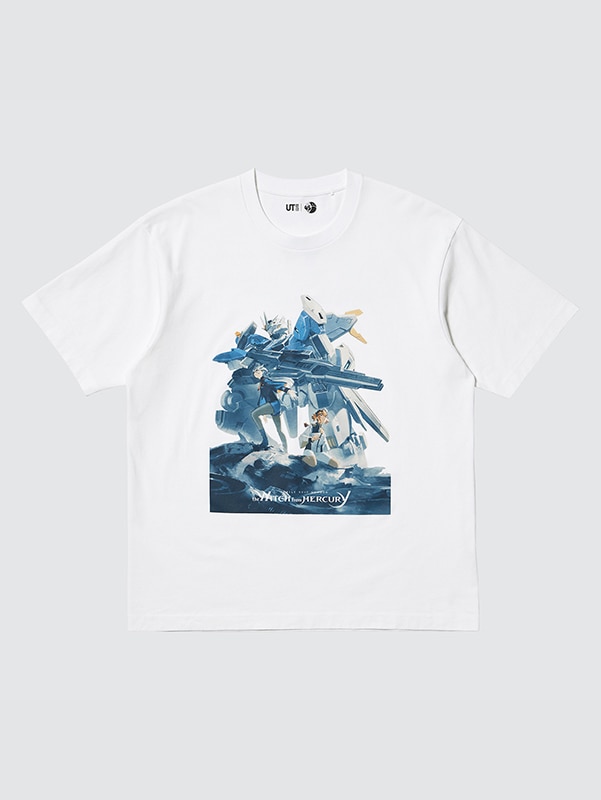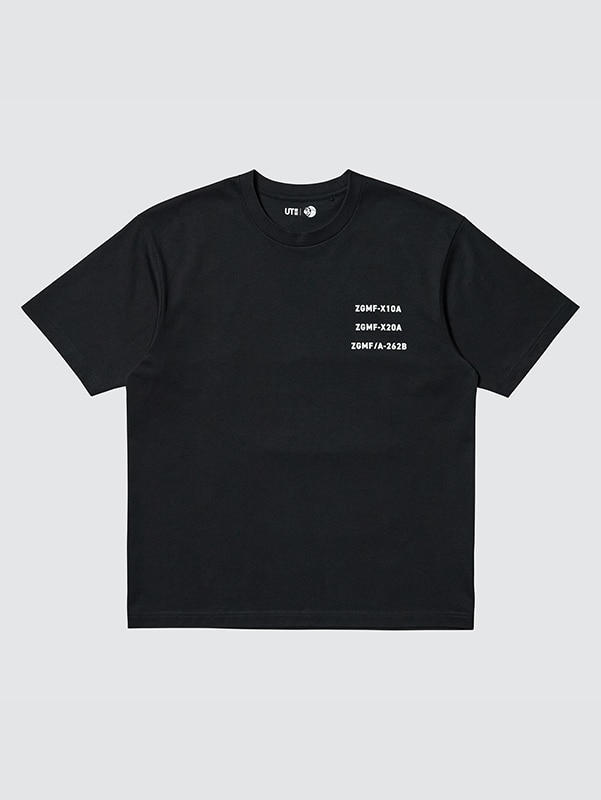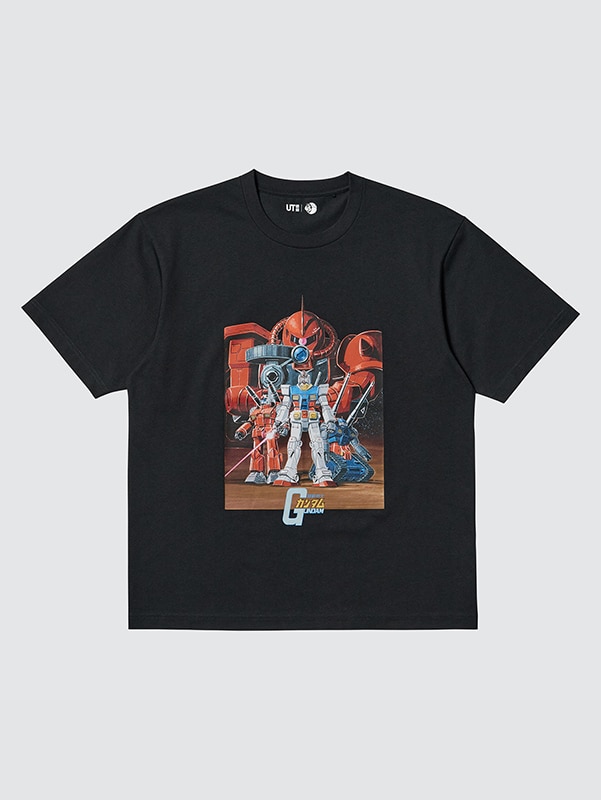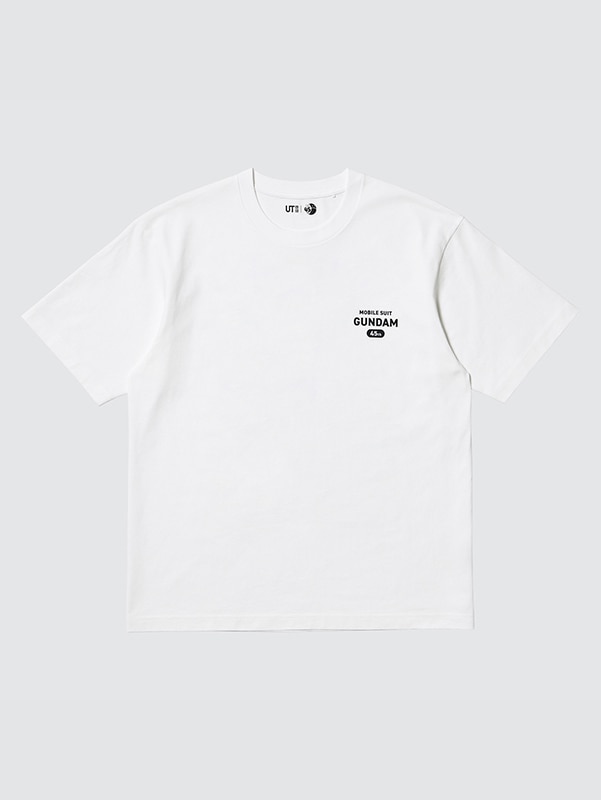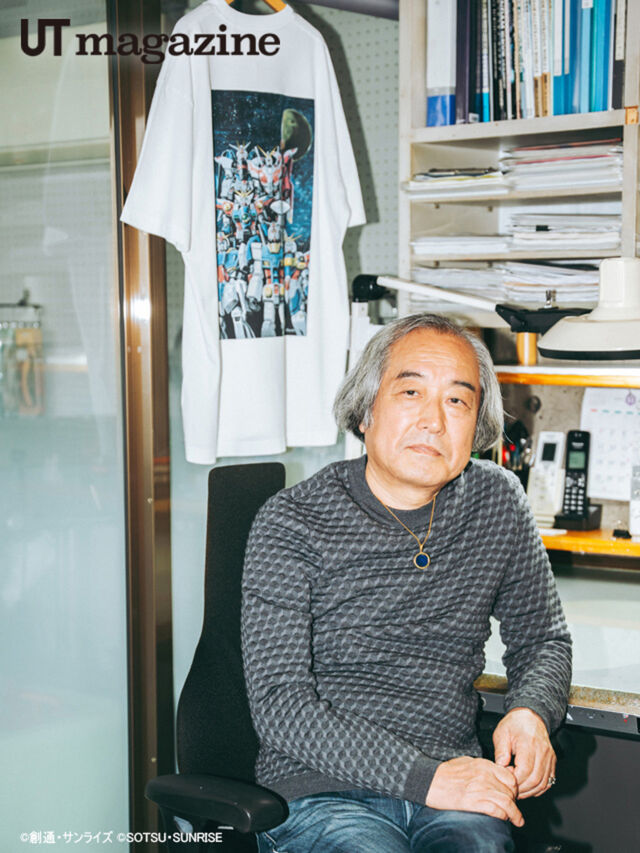
Kunio Okawara: The Visionary Behind Gundam’s Mecha Designs
Apr 18, 2025
UT
In the 45 years since the debut of Mobile Suit Gundam, the TV anime series has spawned a wide-ranging franchise that has evolved with the times. Kunio Okawara is a pioneer of mecha design, a cornerstone of the anime world without which Gundam wouldn’t exist. We spoke to him about the appeal of Gundam and the secrets behind his more than 50 years on the frontline.
View items
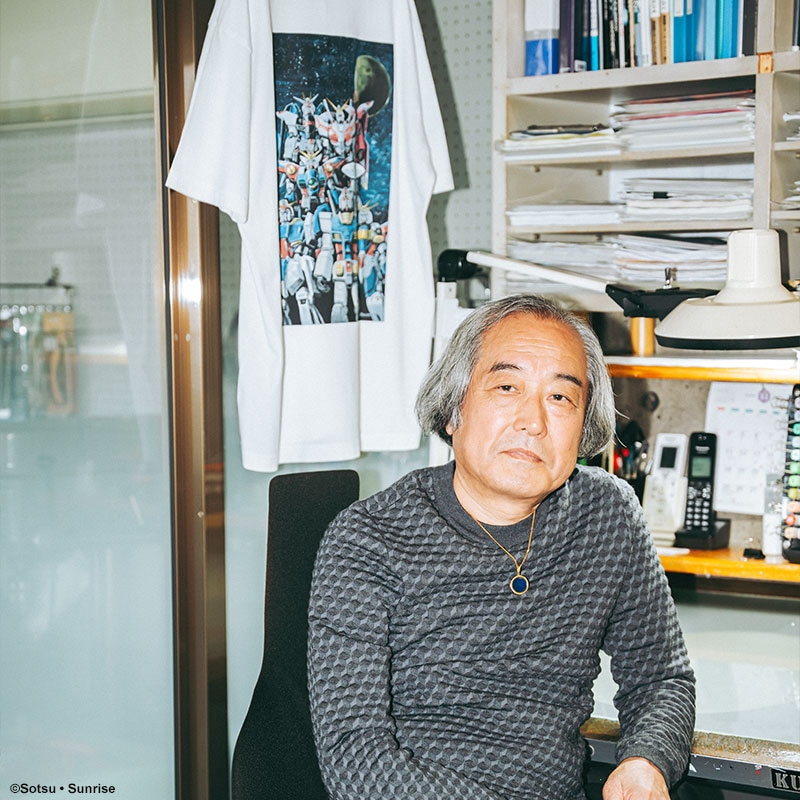
Kunio Okawara is a trailblazer in the world of mecha design, having designed robots and mechas for countless popular anime titles, including the Gundam series, Yatterman, and Armored Trooper Votoms. Even so, he started with no interest in either anime or manga. It was entirely by chance that he ended up in the anime world.
“From my fourth year at Tokyo Zokei University, I was working for an apparel company on probation. I was designing a suit line as part of the menswear team. I felt out of place because everyone around me had gone to fashion school, so I quit before my trial period ended. Then I joined a company that made baby and kids’ clothing, where I met my wife. But I was in charge of sales, which didn’t interest me, so I resigned after getting married. During my job search, I came across a posting from Tatsunoko Production, now known as Tatsunoko Pro. And the studio was an easy commute from my wife’s house (laughs).”
At Tatsunoko, Okawara was initially hired to do background art. Still, he ended up launching his career as a designer when he handled the title logo for Science Ninja Team Gatchaman (1972–74). Since no one at the company could draw mecha at the time, he became specialized in designing them. “People really liked Gatchaman, and I started to find this work interesting,” he recalls. “Students at a women’s university created a fan club for the heroes; I saw firsthand how it was being received. I realized that there was something spectacular about mecha as entertainment.”
In the 52 years since, Okawara has gone on to handle countless mecha designs for anime. But what does this work involve? How did the mobile suits in Mobile Suit Gundam, one of his key works, come about? “My work involves creating forms and conveying them in a way that all the animators can understand. To do so, I work by combining shapes that are accessible and familiar to everyone. I keep my structures simple, adding in as few lines as possible. For Gundam, I created a design inspired by samurai, featuring a chonmage topknot, a kamishimo outer tunic, and a helmet with maedate decoration. For me, designing robots is like designing costumes or fashion. You see that most clearly in the Zaku mechas, which were inspired by suit lines. My experience designing menswear in my apparel days has come in handy.”
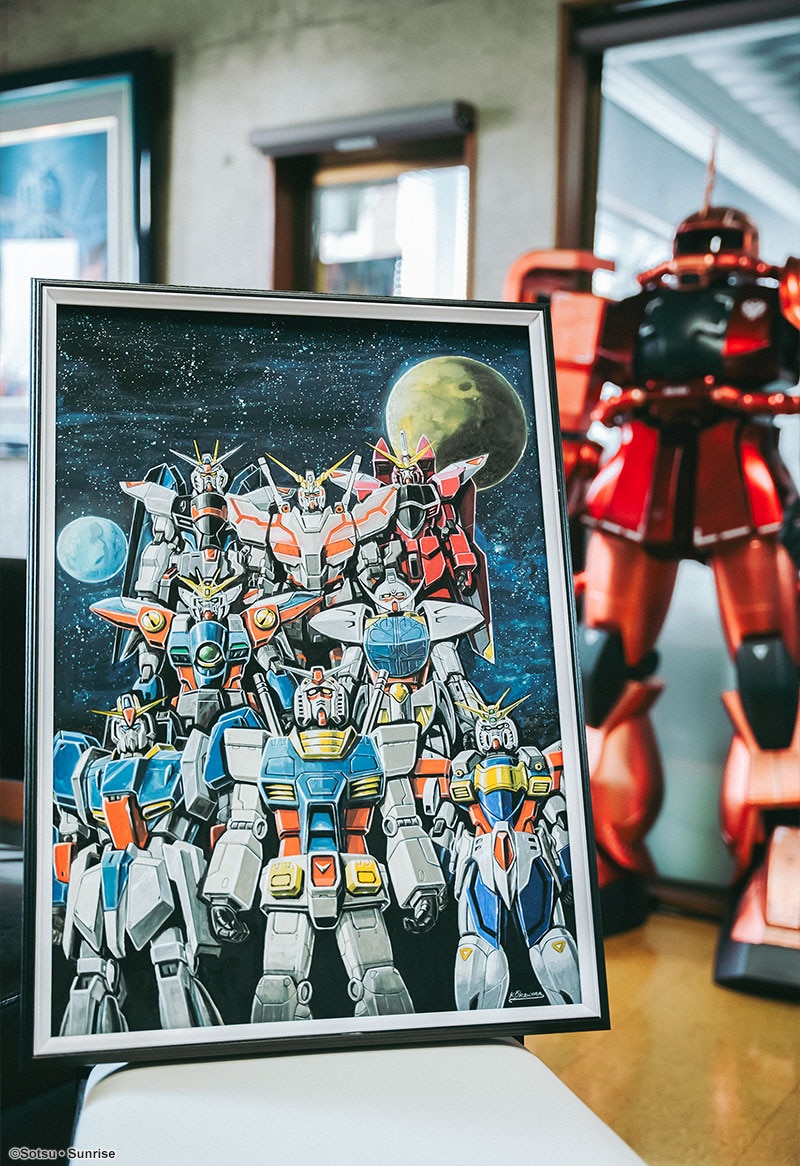
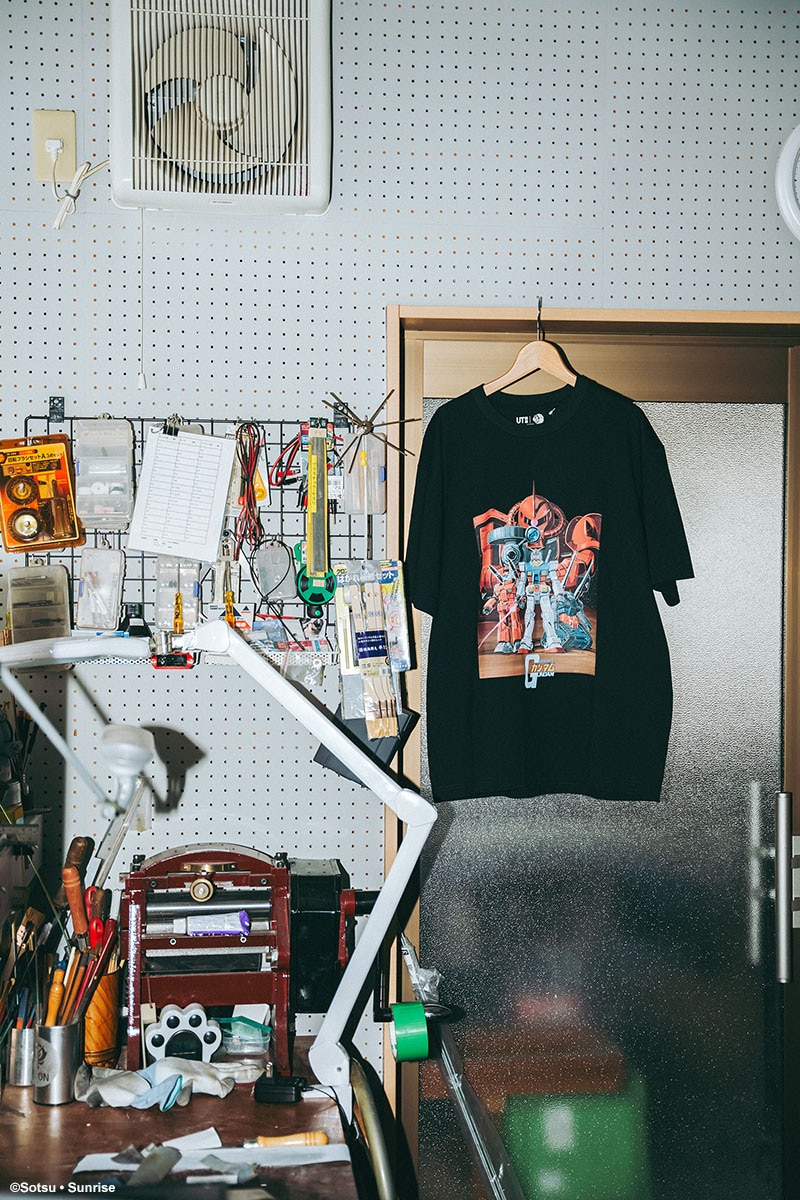
In the 1970s and '80s, the key to convincing toy manufacturers to sponsor anime productions was the robots’ merchandising potential. As a result, Okawara wasn’t just responsible for the mecha designs; he also had to think about how the machines would transform and combine as toys. He would even create mock-ups and bring them to presentations. This skill goes back to his elementary school days.
“The teacher who taught me manual training in my third and fourth years of elementary school had a big influence on me. At the time, I didn’t even know what resin was, but in class, I’d use it to make flower brooches. Or we’d create a device where you roll thin aluminum into a tube, insert a parachute, and launch it into the air with rubber, so that the parachute opens and comes drifting down. Later on in middle and high school, I’d disassemble the machines in my family’s storehouse, look at their structures, and then use the parts to build something. In college, I started experimenting with cars; I’d add a TV to a car, or replace the muffler with a steel pipe. My neighbors would joke about how they could tell I was coming home from miles away, just because of the way my car sounded (laughs).”
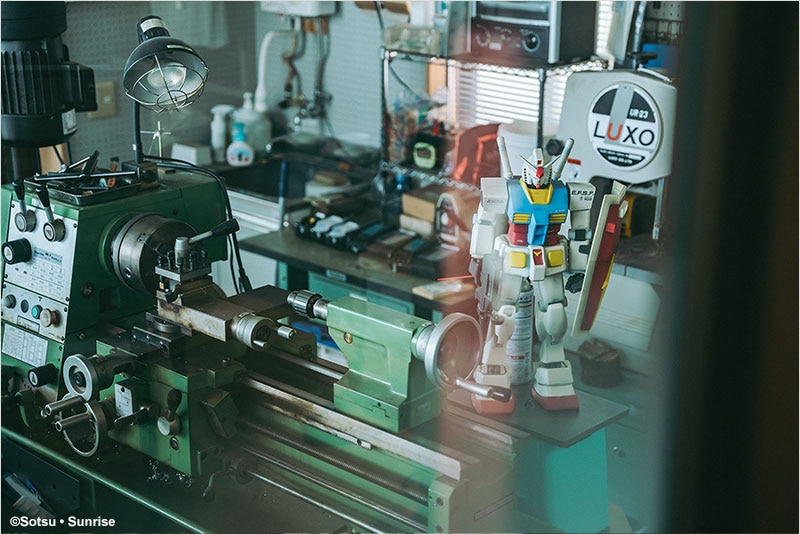
For Okawara, the most fun part of the design process is when he sees the project’s proposal document. From that point, he starts to develop the images in his mind, so the rest of his workflow is quick. If he were an anime fan, he might get too fussy about details and struggle to work like this. But even as he juggles deadlines across multiple projects, he laughs about how he’s proud of never having missed one. “No matter how hectic things get, I’ve never found it stressful, which is probably why I’ve been able to enjoy it.” There is one thing, however, that Okawara has always particularly valued when designing his countless mechas.
“Our work consists of telling believable ‘lies.’ It’s not interesting at all to just show the truth. Of course, you need to understand the parts and structure to tell these lies, but you also have to exaggerate things and make them look photogenic. In my case, I use as few lines as possible, so that you feel the texture and weight through the form. In anime, you tend to see robots from the chest up, so I pay special attention to the design of the upper body. I give them noble features, or take the time to add ornaments to the chest or helmet. When the robots spread their wings wide and move their arms, the composition extends like radioactive rays in a cool way; maybe it has something to do with the golden ratio. When you add to this look, the functions set by the director and weapons that work together with the gimmicks, the robots stand out in a striking way.”
“So I think about what kind of fighting styles and weapons the director wants, and what mecha design is necessary to make that happen. For example, if I’m told to make the Gundam part for magnet coating, even though the machine’s function is a bit unclear, I design it down to the last screw so that the animators get a clear picture. Anime is a collaborative team effort, right up to the final work of the voice actors.”
Since its launch in 1979, the Gundam series has remained beloved and popular around the world and across generations, with installments such as Mobile Suit Gundam SEED in the 2000s, Mobile Suit Gundam: e Witch from Mercury in the 2020s, and the theatrical feature Mobile Suit Gundam SEED FREEDOM, which was released in 2024. And now the UT T-shirts will reach not just fans but perhaps even people who have never seen the anime, introducing them to the franchise.
“I’m glad to have been doing this work for so long. All the installments in the 1970s and ‘80s were originals, so I was able to incorporate my own ideas directly. I feel so fortunate to have lived through such a great era. It’s rare that you get the chance to cook a wonderful meal from scratch with your own ingredients, rather than reheating existing things. It’s a truly precious experience.”
“It’s about time I retired,” Okawara says, half-joking. But he continues to experiment with creating mock-up mechanisms and even uses CGI with ease. He doesn’t hire assistants, as he finds it more freeing and fun to work alone. His easy-going attitude, which belies his 77 years, could well be the secret behind his continued presence on the frontline after all these years.
“People nowadays tend to do everything digitally, but I take advantage of the fact that I can use a pen, and intentionally combine the analog and the digital. I’ve always liked playing around with machines, so I also enjoy new technology, drawing on a computer, and using software. Drawing by hand is a lot of work, so when I’m told I can submit digitally, I think, ‘Even better!’ (laughs). Given that I get to send out all these characters into the world, I want to keep going until my last days.”
View items
The Role of Mecha Design in Anime

Kunio Okawara
Kunio Okawara is a mecha designer. Born in Tokyo in 1947, he graduated from Tokyo Zokei University. After working for major apparel companies, he joined Tatsunoko Production in 1972 and became freelance in 1978. His many anime credits include Science Ninja Team Gatchaman, Yatterman, Mobile Suit Gundam, Armored Trooper Votoms, and various works in the Brave series. He has also handled mecha design in a wide range of other media, including toys and games. In 2013, he received the Special Achievement Award from the Japan Media Arts Festival.
Kunio Okawara is a mecha designer. Born in Tokyo in 1947, he graduated from Tokyo Zokei University. After working for major apparel companies, he joined Tatsunoko Production in 1972 and became freelance in 1978. His many anime credits include Science Ninja Team Gatchaman, Yatterman, Mobile Suit Gundam, Armored Trooper Votoms, and various works in the Brave series. He has also handled mecha design in a wide range of other media, including toys and games. In 2013, he received the Special Achievement Award from the Japan Media Arts Festival.
Kunio Okawara is a trailblazer in the world of mecha design, having designed robots and mechas for countless popular anime titles, including the Gundam series, Yatterman, and Armored Trooper Votoms. Even so, he started with no interest in either anime or manga. It was entirely by chance that he ended up in the anime world.
“From my fourth year at Tokyo Zokei University, I was working for an apparel company on probation. I was designing a suit line as part of the menswear team. I felt out of place because everyone around me had gone to fashion school, so I quit before my trial period ended. Then I joined a company that made baby and kids’ clothing, where I met my wife. But I was in charge of sales, which didn’t interest me, so I resigned after getting married. During my job search, I came across a posting from Tatsunoko Production, now known as Tatsunoko Pro. And the studio was an easy commute from my wife’s house (laughs).”
At Tatsunoko, Okawara was initially hired to do background art. Still, he ended up launching his career as a designer when he handled the title logo for Science Ninja Team Gatchaman (1972–74). Since no one at the company could draw mecha at the time, he became specialized in designing them. “People really liked Gatchaman, and I started to find this work interesting,” he recalls. “Students at a women’s university created a fan club for the heroes; I saw firsthand how it was being received. I realized that there was something spectacular about mecha as entertainment.”
In the 52 years since, Okawara has gone on to handle countless mecha designs for anime. But what does this work involve? How did the mobile suits in Mobile Suit Gundam, one of his key works, come about? “My work involves creating forms and conveying them in a way that all the animators can understand. To do so, I work by combining shapes that are accessible and familiar to everyone. I keep my structures simple, adding in as few lines as possible. For Gundam, I created a design inspired by samurai, featuring a chonmage topknot, a kamishimo outer tunic, and a helmet with maedate decoration. For me, designing robots is like designing costumes or fashion. You see that most clearly in the Zaku mechas, which were inspired by suit lines. My experience designing menswear in my apparel days has come in handy.”

The illustration drawn exclusively for UT features a group of past Gundams. Bottom, from left: Z (Zeta) Gundam, Gundam, Burning Gundam. Middle left: Wing Gundam Zero. Middle right: ∀ (Turn A) Gundam. Top, from left: Freedom Gundam, Unicorn Gundam, Justice Gundam.

A T-shirt hanging in Okawara’s workshop features characters from Mobile Suit Gundam, the first series in the franchise: Gundam (middle), Guncannon (left), and Guntank (right). On the back is a print of an original drawing of Char’s red Zaku.
I was Better at Handicrafts Than Drawing
In the 1970s and '80s, the key to convincing toy manufacturers to sponsor anime productions was the robots’ merchandising potential. As a result, Okawara wasn’t just responsible for the mecha designs; he also had to think about how the machines would transform and combine as toys. He would even create mock-ups and bring them to presentations. This skill goes back to his elementary school days.
“The teacher who taught me manual training in my third and fourth years of elementary school had a big influence on me. At the time, I didn’t even know what resin was, but in class, I’d use it to make flower brooches. Or we’d create a device where you roll thin aluminum into a tube, insert a parachute, and launch it into the air with rubber, so that the parachute opens and comes drifting down. Later on in middle and high school, I’d disassemble the machines in my family’s storehouse, look at their structures, and then use the parts to build something. In college, I started experimenting with cars; I’d add a TV to a car, or replace the muffler with a steel pipe. My neighbors would joke about how they could tell I was coming home from miles away, just because of the way my car sounded (laughs).”

Okawara takes pride in his workshop, which contains his tools, lathe, and everything else he needs to produce his models from start to finish. On top of his machine is a plastic model of a Gundam.
Creating Something Entertaining is All About Telling a Believable “Lie”
For Okawara, the most fun part of the design process is when he sees the project’s proposal document. From that point, he starts to develop the images in his mind, so the rest of his workflow is quick. If he were an anime fan, he might get too fussy about details and struggle to work like this. But even as he juggles deadlines across multiple projects, he laughs about how he’s proud of never having missed one. “No matter how hectic things get, I’ve never found it stressful, which is probably why I’ve been able to enjoy it.” There is one thing, however, that Okawara has always particularly valued when designing his countless mechas.
“Our work consists of telling believable ‘lies.’ It’s not interesting at all to just show the truth. Of course, you need to understand the parts and structure to tell these lies, but you also have to exaggerate things and make them look photogenic. In my case, I use as few lines as possible, so that you feel the texture and weight through the form. In anime, you tend to see robots from the chest up, so I pay special attention to the design of the upper body. I give them noble features, or take the time to add ornaments to the chest or helmet. When the robots spread their wings wide and move their arms, the composition extends like radioactive rays in a cool way; maybe it has something to do with the golden ratio. When you add to this look, the functions set by the director and weapons that work together with the gimmicks, the robots stand out in a striking way.”
“So I think about what kind of fighting styles and weapons the director wants, and what mecha design is necessary to make that happen. For example, if I’m told to make the Gundam part for magnet coating, even though the machine’s function is a bit unclear, I design it down to the last screw so that the animators get a clear picture. Anime is a collaborative team effort, right up to the final work of the voice actors.”
I Want to Keep Designing Characters Until My Last Moments
Since its launch in 1979, the Gundam series has remained beloved and popular around the world and across generations, with installments such as Mobile Suit Gundam SEED in the 2000s, Mobile Suit Gundam: e Witch from Mercury in the 2020s, and the theatrical feature Mobile Suit Gundam SEED FREEDOM, which was released in 2024. And now the UT T-shirts will reach not just fans but perhaps even people who have never seen the anime, introducing them to the franchise.
“I’m glad to have been doing this work for so long. All the installments in the 1970s and ‘80s were originals, so I was able to incorporate my own ideas directly. I feel so fortunate to have lived through such a great era. It’s rare that you get the chance to cook a wonderful meal from scratch with your own ingredients, rather than reheating existing things. It’s a truly precious experience.”
“It’s about time I retired,” Okawara says, half-joking. But he continues to experiment with creating mock-up mechanisms and even uses CGI with ease. He doesn’t hire assistants, as he finds it more freeing and fun to work alone. His easy-going attitude, which belies his 77 years, could well be the secret behind his continued presence on the frontline after all these years.
“People nowadays tend to do everything digitally, but I take advantage of the fact that I can use a pen, and intentionally combine the analog and the digital. I’ve always liked playing around with machines, so I also enjoy new technology, drawing on a computer, and using software. Drawing by hand is a lot of work, so when I’m told I can submit digitally, I think, ‘Even better!’ (laughs). Given that I get to send out all these characters into the world, I want to keep going until my last days.”
© Sotsu • Sunrise
Lineup
TOP
